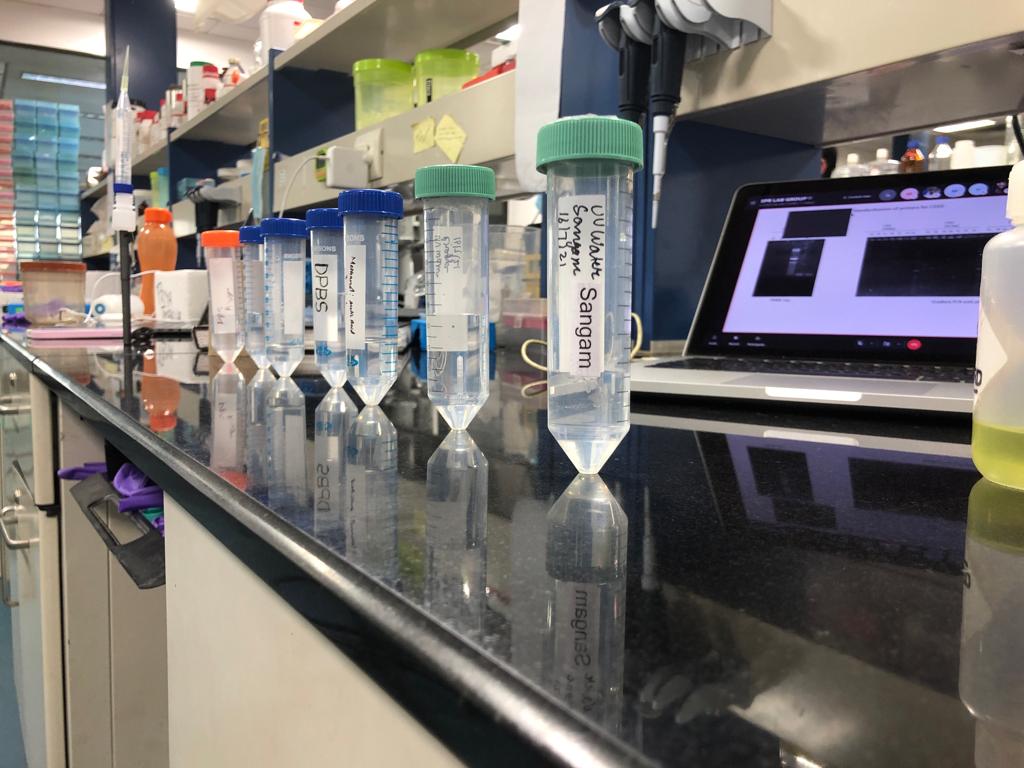Cancer progression is accompanied by various genetic and epigenetic changes that decide the fate of the cancer patient. Various LncRNAs are also known to be dysregulated in cancer. MALAT-1, metastasis-associated lung adenocarcinoma transcript 1, is one such lncRNA, levels of which have been seen to be increased in many types of difficult to treat cancers. A triple helix is known to be present in this lncRNA that stabilizes its structure. Souvik Maiti’s lab characterized the interaction of MALAT1 triplex with quercetin, a plant pigment found in fruits like apples and berries, using various biophysical techniques. They report decreased MALAT1 and its downstream target levels because of its binding to quercetin, which opens up scope for future studies to achieve its therapeutic potential.
Small molecule quercetin binds MALAT1 triplex and modulates its cellular function. Rakheja I, Ansari AH, Ray A, Chandra Joshi D, Maiti S. Mol Ther Nucleic Acids. 2022 Sep 23;30:241-256.
Knowledgebase of potential multifaceted solutions to antimicrobial resistance. Bhargav A, Gupta S, Seth S, James S, Fatima F, Chaurasia P, Ramachandran S. Comput Biol Chem. 2022 Sep 16;101:107772
Tuberculosis, the most ancient disease of humanity, has mysteries waiting to be discovered. The evolution of various lineages of Mycobacterium tuberculosis has made sure that the same type of host cells are manipulated via different cellular pathways. In this article, Vivek Rao’s lab reports how the modern lineages of Mycobacterium tuberculosis differ from ancient lineages in the intracellular trafficking within macrophages and how that generates a differential Type1 IFN response. They suggest that it is the stronger Type I IFN mediated proinflammatory response that improves survival of the modern lineages of Mycobacterium tuberculosis in the host.
Modern Clinical Mycobacterium tuberculosis Strains Leverage Type I IFN Pathway for a Proinflammatory Response in the Host. Shankaran D, Arumugam P, Vasanthakumar RP, Singh A, Bothra A, Gandotra S, Rao V. J Immunol. 2022 Sep 23:ji2101029.
The cause for non alcoholic fatty liver disease is not known, so the major understanding about the disease comes from using animal models that mimic conditions, like obesity, where fatty liver is observed. Such a model is established by giving a high fat diet to the animals for inducing obesity, although there are ‘lean/thin individuals’ with NAFLD – ‘skinny fat’. Thus, there is a need to have a model for NAFLD that is not high fat diet induced. Chetana Sachidanandan’s lab reports such a diet – independent (IL-6 overexpressing) zebrafish model, that shows NAFLD. Rosiglitazone, an antidiabetic drug that has shown to reduce fat deposits in high fat diet models of NAFLD, was shown to reduce the liver fatty content of IL-6 overexpressing zebrafish, which illustrates how this model can be used to screen for therapeutics for NAFLD in lean individuals.
A diet-independent zebrafish model for NAFLD recapitulates patient lipid profiles and offers a system for small molecule screening. Singh MK, Yadav R, Bhaskar AK, Sengupta S, Sachidanandan C. Biochim Biophys Acta Mol Cell Biol Lipids. 2022 Oct 4;1868(1):159246.
Cyclic-di-GMP is one of the signaling molecules that can contribute to antibiotic resistance in Mycobacterium. To better understand the stability of mycobacterial oligoribonuclease, which maintain cyclic-di-GMP homeostasis, Bhupesh Taneja’s lab characterized the three dimensional structure of the oligoribonuclease of M. smegmatis. In this study, they report the importance of the C-terminal tail of the mycobacterial oligo ribonuclease, absent in other bacteria, in providing stability to the enzyme and thus affecting the survival of mycobacterium and normal and stress conditions.
Three-dimensional structure of a mycobacterial oligoribonuclease reveals a unique C-terminal tail that stabilizes the homodimer. Badhwar P, Khan SH, Taneja B. J Biol Chem. 2022 Oct 13:102595.

